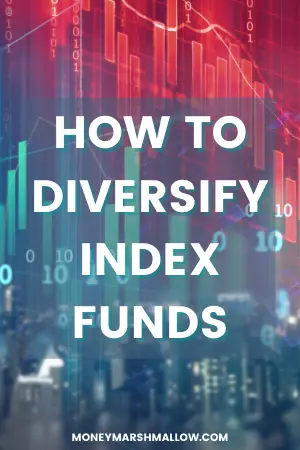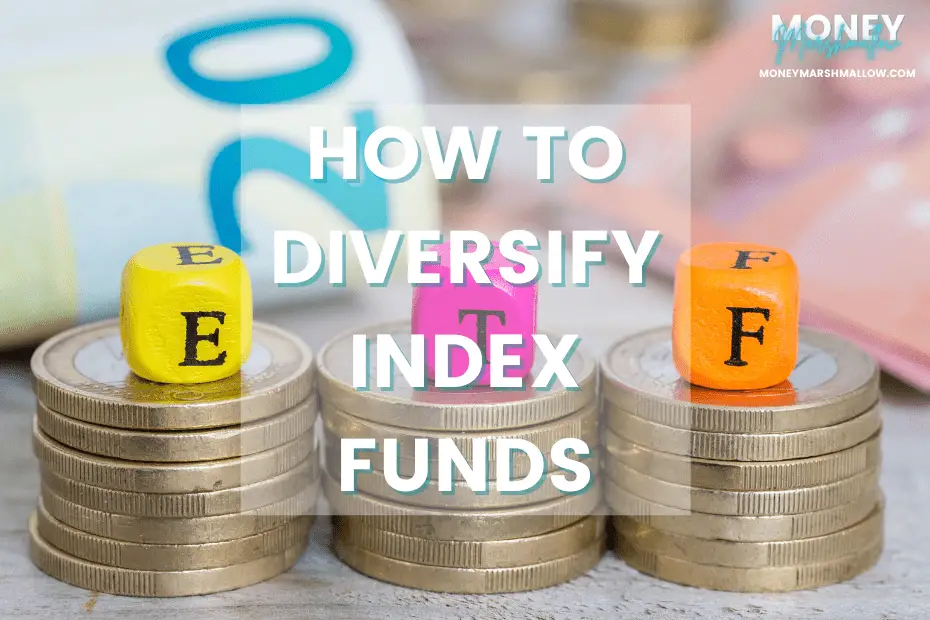Starting investing can often feel daunting, often due to a lack of knowledge on how to start. Once you have a good understanding of why investing is important, index funds are one of the easiest options to get started with.
Index funds are an attractive method of investing for several reasons, including diversification, low fees and ease of automation. When you purchase shares of an index fund, you’re exposed to all the stocks in an index. The idea is that stocks that are appreciating will make up for stocks that are depreciating.
Therefore, index fund investing is suitable for almost everyone, because an automated investment portfolio takes care of itself. But is it also worthwhile for an index investor to further diversify?
Read on to learn more about investing in index funds and how to diversify your index fund portfolio.
What is an index fund?
Index funds are a group of mutual funds or exchange-traded funds (ETFs) that are designed to track a specific index, such as the S&P 500 or FTSE 100. These indices track the performance of the biggest companies in the US and the UK, respectively.
Index funds are popular because they often have low fees and offer a variety of stocks and bonds. Because they track an index passively, they don’t require the fixed costs or management that other funds do. It’s therefore a very passive way of investing that requires minimal effort from an investor.
One index fund can hold hundreds or even thousands of companies, so investors are fairly diversified when they choose an index. Regardless of this, index funds are not a one-size-fits-all option. They are great for low-key investors who don’t mind a hands-off approach. But the question remains: do you still need to diversify with index funds or is one enough?

How to choose index funds?
1. Choose what you want to invest in
Do you want to choose the widest possible index fund that covers all companies globally, a specific geographical location or perhaps a specific industry or megatrend? Do you want all the companies in one market, or would you prefer investing in only certain types of companies?
2. Check the fees
The management fees of an index fund can be as low as 0.1%, while in actively managed funds it’s not uncommon for the fee to be 1-3%. The fees can have a huge impact in the long run, so it’s worth comparing the exact costs. When it comes to index funds, there needs to be a good reason if the management fees are more than 0.5%.
Contrary to the familiar saying, when it comes to index funds, cheap can give you quality whereas expensive can often backfire.
Similar to buying direct company stocks, it’s advisable to stick to funds that have a trading fee of less than 1%.
3. Ensure the funds don't have major overlaps
For example, if you decide to start investing in two index funds – because two funds make a more diversified portfolio than one – take a look at what each index fund contains. For example, it’s probably not worth buying both MSCI World and the S&P 500 as the large US companies play a major role in both. The name of the MSCI World Index can be a bit confusing due to its history: it covers only 85% of the largest companies in developed markets, and more than 65% of these are US companies. In other words, emerging markets and small companies are left completely uncovered.
However, if for some reason you want to properly emphasise one market, duplication can sometimes be justified. If, on the other hand, you want to spread widely around the world, it’s not advised to choose the top 10 most popular funds in your portfolio. A large number of funds does not always correlate with broad diversification. Many ETFs can follow the same index, leaving the diversification benefit small.
Is it possible to have too many different index funds in my portfolio?
Although diversification in investing is generally a good thing, having various different index funds can have some disadvantages too. Let’s look into this a bit further to understand how to diversify index funds smartly.
Firstly, a very decentralised and multi-line portfolio can be more difficult to manage and analyse. For example, you have two stockbrokers in your portfolio, and both have multiple index funds. You want to know what weight you have in the US. However, due to the various broker’s accounts and index funds, you may find it complicated to combine the information.
Secondly, although diversification protects you from devastating losses, it also costs you in average annual returns. That’s because risk and reward go hand-in-hand in the financial markets. So anything that reduces your risk will also reduce your return. But since an index investor usually specifically wants the average return of the market, this isn’t necessarily an issue.
It’s also important to remember that if there’s a fee for trading, buying several small purchases at a high cost will eat the return. If there is no charge for purchases or the charge is not fixed but, for example, a percentage, this problem will not arise.
Furthermore, it’s important to keep both management fees and trading fees under control. When this is in order, you can find numerous index funds in your portfolio without any major inconvenience.

The benefits of diversifying index funds
When it comes to diversifying index funds, there are a few benefits of having a couple of different funds instead of one bigger one.
Let’s use MSCI ACWI IMI – which covers almost all listed companies in all markets – as an example. For some investors (especially the ones keen on a passive approach), a very broad diversification in one fund is suitable. However, other investors prefer being able to invest according to their own views on the direction and trends of the world. These can be emphasised by investing in a few different funds.
The MSCI ACWI IMI portfolio also includes companies that can be considered unethical, dying industries and markets you may not have heard of. So if you believe that companies classified as responsible will do better than the ‘irresponsible’ ones in the future, you might want to choose an SRI (Socially Responsible Investing) or ESG (Environmental, Social and Governance) screened fund in your portfolio.
An ESG or SRI in the name of the fund indicates that the companies have passed the sustainability assessment. The ESG screen is looser and eliminates obvious “bad guys”, e.g. the arms industry. SRI is stricter and emphasises companies classified as responsible. Sustainability-screened ETFs are widely available in emerging and developed markets, Japan, Europe and the US, among others.
Related: How to invest responsibly and sustainably
If you choose a slightly ‘less sexy’, well-diversified fund as the main investment in your portfolio, you can season the portfolio by purchasing other ETFs on top of the main one. ‘Media-sexy’ options include industry-specific funds, ranging from digitalisation ETFs to automation, robotics, big data, clean energy or Esports. You name it!
Should I diversify my index funds?
Like many things, it’s not about the number of index funds you have – it’s about the quality. If you hold multiple index funds that invest in the same types of stocks and bonds, you’re not really increasing the diversification of your investments. To learn how to diversify index funds, here are a few example areas to consider:
- One market vs global
- Developed vs emerging markets
- Large vs small cap
- Value vs growth stocks
- Variety of industries
- Variety of asset classes (e.g. stocks, bonds, commodities, real estate investment trusts)
Warren Buffett has suggested that the average investor needs to only invest in a broad stock market index to be properly diversified. According to Buffet, a single S&P 500 index fund provides all the stock diversification you need.
As long as your index funds reflect that variety of investments, you should be properly diversified. In the end, learning how to invest is all about how much time you want to spend researching. If choosing one index fund is all you have time for, that’s still better than not investing at all.
If you require more information about the need to diversify index funds in your personal circumstances, it’s worth doing further research or talking to a financial adviser.


Really well explained and great food for thought!
Thank you for your comment, Isabel – glad you found this useful!